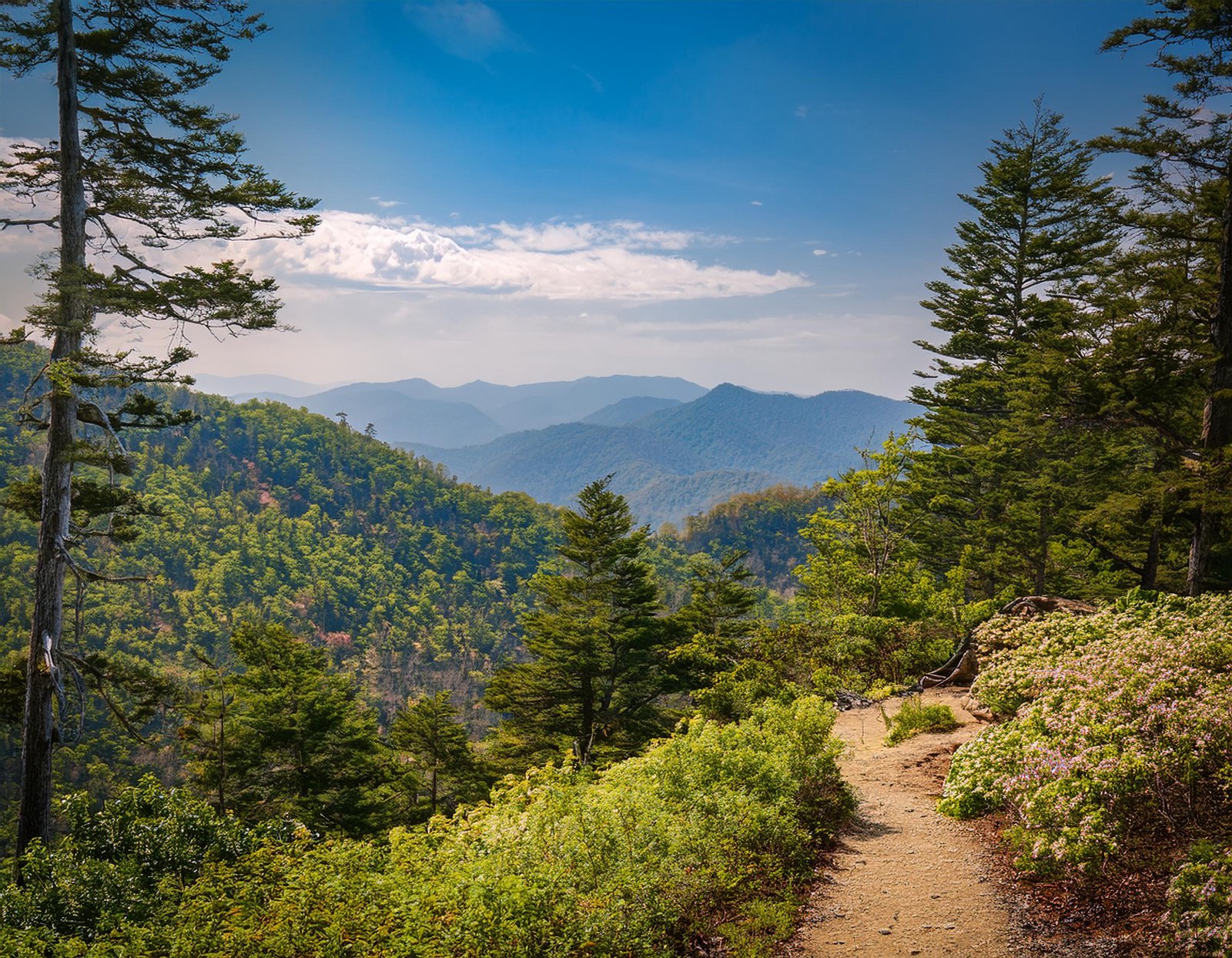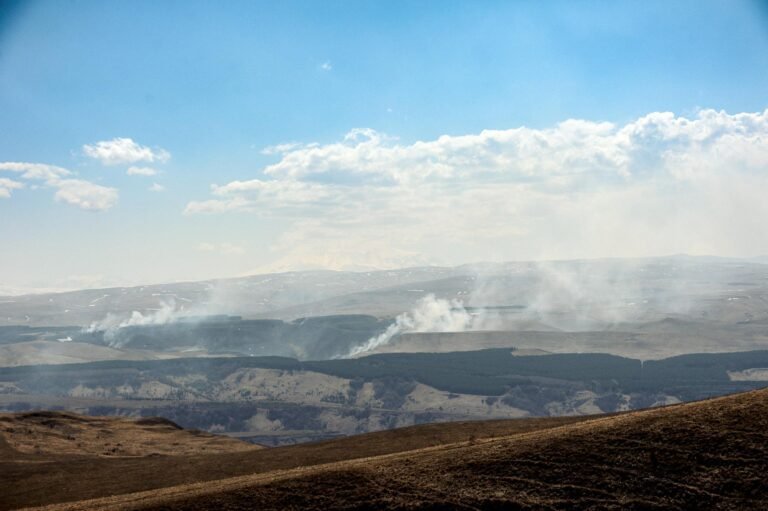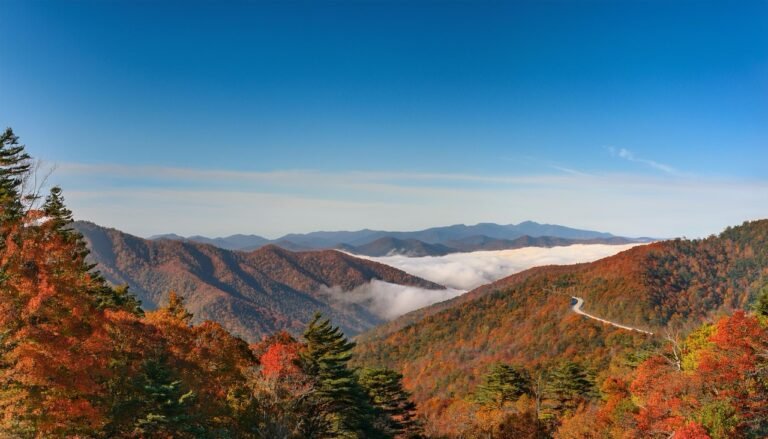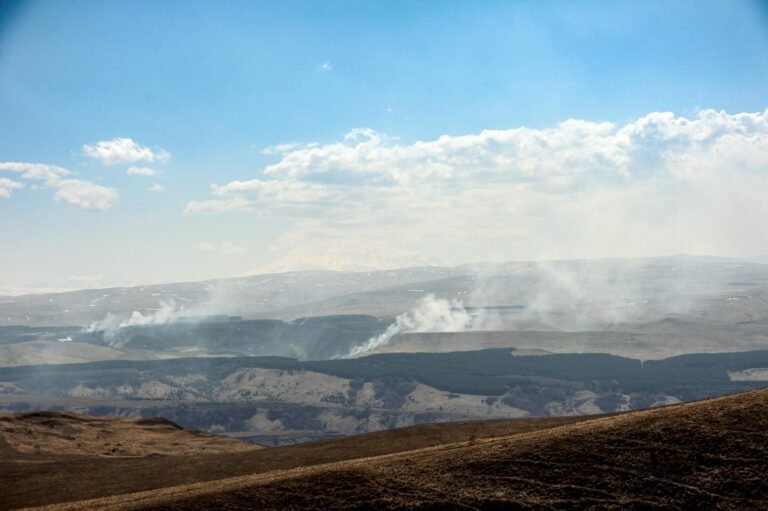Great Smoky Mountains National Park Hiking Trails
Most Visited National Park
Welcome to the Great Smoky Mountains National Park, where nature’s beauty is on full display! As the most visited national park in the U.S., it drew over 14 million visitors in 2023. This park is a treasure trove of stunning landscapes, diverse wildlife, and rich cultural history, making it a must-see for families and adventurers alike. Whether you’re here for the breathtaking views or to explore the rich biodiversity, there’s something for everyone.
To help you get around, grab a detailed map at the Great Smoky Mountains National Park Visitor Center. Planning to stay a while? Check out Great Smoky Mountains National Park Lodging or Great Smoky Mountains National Park Camping options.
Hiking Trails Overview
One of the best ways to experience the Great Smoky Mountains is by hitting the trails. With over 150 trails covering more than 850 miles, including a seventy-mile stretch of the Appalachian Trail, hiking is the top activity here. From easy walks to challenging backcountry treks, there’s a trail for everyone.
Here’s a quick look at some of the park’s most popular hiking trails:
| Trail Name | Length (miles) | Difficulty |
|---|---|---|
| Gatlinburg Trail | 3.8 | Easy |
| Laurel Falls Trail | 2.6 | Moderate |
| Abrams Falls Trail | 5.0 | Moderate |
| Little River Trail | 4.9 | Easy |
| Oconaluftee River Trail | 3.0 | Easy |
For family-friendly hikes, try the Gatlinburg Trail, Laurel Falls Trail, or Abrams Falls Trail. These trails offer beautiful scenery and manageable distances, perfect for hikers of all ages.
If you’re after scenic beauty, check out the Little River Trail or Oconaluftee River Trail. These trails wind through lush forests and along picturesque rivers, providing a peaceful hiking experience.
Before you head out, make sure to check the Great Smoky Mountains National Park Weather and prepare accordingly. Happy hiking!
For more detailed info on each trail, including maps and tips, visit our section on the best hikes in Great Smoky Mountains National Park.
Family-Friendly Hikes
Heading to the Great Smoky Mountains National Park with the fam? You’re in for a blast! Here are some top-notch trails that are perfect for everyone, from toddlers to grandparents.
Gatlinburg Trail
The Gatlinburg Trail is a breezy 3.9-mile roundtrip hike starting at the Sugarlands Visitor Center. It’s one of the easiest trails in the park, making it a great pick for families with little ones or anyone looking for a chill walk.
-
- Distance: 3.9 miles roundtrip
- Elevation Gain: 235 feet
- Starting Point: Sugarlands Visitor Center
| Trail | Distance (miles) | Elevation Gain (feet) | Starting Point |
|---|---|---|---|
| Gatlinburg Trail | 3.9 | 235 | Sugarlands Visitor Center |
For more details on planning your visit, check out the Great Smoky Mountains National Park Visitor Center.
Laurel Falls Trail
Laurel Falls Trail is a hit, especially for families wanting to see one of the park’s best waterfalls. This 2.3-mile roundtrip hike features an 80-foot waterfall and is jaw-dropping during the wildflower bloom in May.
-
- Distance: 2.3 miles roundtrip
- Elevation Gain: 314 feet
- Highlight: 80-foot waterfall
| Trail | Distance (miles) | Elevation Gain (feet) | Highlight |
|---|---|---|---|
| Laurel Falls Trail | 2.3 | 314 | 80-foot waterfall |
For an unforgettable experience, plan your hike during the wildflower bloom. For more info, visit Great Smoky Mountains National Park Waterfalls.
Abrams Falls Trail
Abrams Falls Trail is a bit more of a workout but totally worth it. You’ll trek through beautiful forests and might even spot otters before reaching a stunning 20-foot waterfall. This 5.2-mile roundtrip hike has an elevation gain of 675 feet.
-
- Distance: 5.2 miles roundtrip
- Elevation Gain: 675 feet
- Highlight: 20-foot waterfall
| Trail | Distance (miles) | Elevation Gain (feet) | Highlight |
|---|---|---|---|
| Abrams Falls Trail | 5.2 | 675 | 20-foot waterfall |
Before heading out, check out the Great Smoky Mountains National Park Map for detailed trail routes and other attractions.
These hikes offer a range of experiences for families visiting Great Smoky Mountains National Park. Whether you’re looking for a short and easy trail or a slightly more challenging hike, there’s something for everyone. For more activities and places to explore, visit Things to Do in Great Smoky Mountains National Park.
Scenic Nature Trails
The Great Smoky Mountains National Park is a treasure trove of nature trails that let you soak in the beauty of the outdoors. Two must-visit trails are the Little River Trail and the Oconaluftee River Trail, each offering its own charm for you and your family.
Little River Trail
The Little River Trail is a 4.9-mile roundtrip hike starting near the Elkmont Campground. This trail is like stepping into a postcard, with historical remnants, colorful wildflowers, and peaceful river views. You’ll pass by old cabins from the logging days and end up at a lovely 20-foot waterfall that spills into the river.
| Feature | Details |
|---|---|
| Trail Length | 4.9 miles roundtrip |
| Elevation Gain | 412 feet |
| Starting Point | Near Elkmont Campground |
| Highlights | Old cabins, wildflowers, 20-foot waterfall |
Need a place to crash nearby? Check out our page on Great Smoky Mountains National Park camping.
Oconaluftee River Trail
The Oconaluftee River Trail is a 3-mile roundtrip hike starting at the Mountain Farm Museum. This trail is perfect for families, blending natural beauty with a touch of history. As you stroll along the river, you’ll see traditional gardens, livestock, and a variety of trees and wildflowers. With just a 70-foot elevation gain, it’s an easy walk for everyone.
| Feature | Details |
|---|---|
| Trail Length | 3 miles roundtrip |
| Elevation Gain | 70 feet |
| Starting Point | Mountain Farm Museum |
| Highlights | Historical sites, river views, wildflowers |
After your hike, dive into the area’s history and culture at the Great Smoky Mountains National Park Visitor Center.
Both trails offer a peaceful and scenic escape, making them perfect for families wanting to explore the Great Smoky Mountains National Park hiking trails. Don’t forget to check the Great Smoky Mountains National Park weather before you head out to ensure a smooth hike.
What Makes a Hike Tough?
Planning a trek in the Great Smoky Mountains National Park? Knowing what makes a trail tough or easy can help you pick the right path for your skills and stamina. Let’s break it down so you can have a blast without biting off more than you can chew.
Distance and Climbing
First up, how far are you walking? For newbies, stick to hikes between 3 to 8 miles. Remember, that’s roundtrip. So, a 5-mile hike means 2.5 miles up and 2.5 miles back down.
But distance isn’t the whole story. Elevation gain—how high you climb—really cranks up the difficulty. Here’s a quick guide:
| Hike Type | Distance (miles) | Elevation Gain (feet) |
|---|---|---|
| Easy | 3-5 | 200-400 |
| Moderate | 5-8 | 400-700 |
| Difficult | 8-12 | 700-1000 |
| Challenging | 12+ | 1000+ |
Elevation profiles can be super helpful. They show you how much climbing you’ll do over the hike. The x-axis is the hike length, and the y-axis is the elevation gain. This helps you see if you’re in for a gentle slope or a steep climb.
Want to know which trails are worth your time? Check out our best hikes in Great Smoky Mountains National Park.
Get more information on National Parks
Climbing Per Mile
How steep is the trail? Elevation gain per mile tells you that. Here’s the lowdown:
-
- Easy Hikes: 200-400 feet per mile
- Moderate Hikes: 400-700 feet per mile
- Difficult Hikes: 700-1000 feet per mile
- Challenging Hikes: 1000+ feet per mile
| Difficulty Level | Elevation Gain Per Mile (feet) |
|---|---|
| Easy | 200-400 |
| Moderate | 400-700 |
| Difficult | 700-1000 |
| Challenging | 1000+ |
On flat ground, you might walk a mile in 20 minutes. But uphill? That can stretch to 30 minutes or more. If you’re in great shape, you might keep it to 20-25 minutes per mile. Tough terrain can slow you down to 45 minutes per mile. Your pace depends on your fitness, the trail, and how many breaks you take.
To plan your adventure, grab the Great Smoky Mountains National Park map and swing by the visitor center for the latest trail updates. Thinking of staying overnight? Check out lodging options and camping spots in the park.
Knowing these tips will help you have a fun and safe hike in the Great Smoky Mountains National Park. Happy trails!
How Trails Came to Be in the Great Smoky Mountains
The Great Smoky Mountains National Park isn’t just a natural gem; it’s a living history book of trail development. The park’s hiking paths owe much to the Civilian Conservation Corps and the logging era.
Civilian Conservation Corps: The Trailblazers
Back in the Great Depression, the Civilian Conservation Corps (CCC) stepped in to shape the Great Smoky Mountains National Park. Launched in 1933, this program gave jobs to young men and was a game-changer for the park’s trails and campsites.
These guys dug and built many of the hundreds of miles of trails you see today. Their sweat and grit not only provided work during tough times but also set up the recreational trails that millions of visitors love.
| Contribution | Impact |
|---|---|
| Miles of Trails Built | Hundreds |
| Campsites Developed | Loads |
| Employment Provided | Thousands of Young Men |
Want to see the park’s layout and trail options? Check out the Great Smoky Mountains National Park map.
Logging Era: From Timber to Trails
Before the park was a park, it was a logging hotspot. Lumber companies built railroads to haul timber out. When the logging stopped, the CCC turned these old railroad beds into roads and hiking trails.
Some of the popular trails that started as railroad beds include Little River, Jakes Creek, and Goshen Prong. These trails mix natural beauty with a slice of history.
| Trail Name | Origin |
|---|---|
| Little River | Old Railroad Bed |
| Jakes Creek | Old Railroad Bed |
| Goshen Prong | Old Railroad Bed |
Many trails were also old Cherokee mountain roads, used for trading and hunting long before settlers arrived. As settlers moved in, these roads were adapted into the hiking trails you enjoy today.
For more on the park’s rich history and to plan your visit, swing by the Great Smoky Mountains National Park Visitor Center.
Knowing the history behind these trails adds a whole new layer of appreciation as you hike through the Great Smoky Mountains National Park. From the CCC’s hard work to the repurposed logging railroads, the trails are a blend of nature and history. For the best trails to explore, check out our guide on the best hikes in Great Smoky Mountains National Park.
Unique Natural Attractions
The Great Smoky Mountains National Park is a treasure trove of natural wonders that will make your hiking adventures unforgettable. Let’s dive into two of these gems: the Wetland Mitigation Bank and the park’s diverse wildlife.
Wetland Mitigation Bank
Tucked near Trotwood, the Wetland Mitigation Bank is a conservation hotspot managed by Five Rivers MetroParks. It’s one of the first mitigation banks in the nation owned by a conservation agency, providing essential wetland credits to developers while safeguarding the environment.
Bird watchers, get your binoculars ready! Volunteers have spotted over 89 bird species here, many of them rare. This place is a haven for nature lovers. Planning a visit? Check out our Great Smoky Mountains National Park map for directions and more info.
| Species Spotted | Number of Species |
|---|---|
| Birds | 89+ |
| Moths | 200 |
| Butterflies | 30 |
Wildlife in the Park
The Great Smoky Mountains National Park is a wildlife paradise. Bobcats, including the Ohio bobcat, have made a comeback in places like Montgomery County. These stealthy cats love well-forested areas with creeks and plenty of small critters to hunt.
Germantown MetroPark is a prime spot to catch a glimpse of these elusive animals. And don’t miss Huffman Prairie, a State Natural Landmark teeming with rare prairie plants, birds, and insects. Keep an eye out for bobolinks, Henslow’s sparrows, and the endangered green snake.
Want to make the most of your wildlife spotting? Check out our guide on things to do in Great Smoky Mountains National Park for tips on the best times and places to see these amazing creatures.
Whether you’re exploring the Wetland Mitigation Bank or soaking in the park’s wildlife, the Great Smoky Mountains National Park offers natural attractions that will leave you and your family in awe.
Current Events and Alerts
As of 2024, several significant updates and improvements are underway in Great Smoky Mountains National Park, impacting some of its most popular hiking trails. Notably, the Ramsey Cascades Trail is closed Mondays through Thursdays to allow for a major rehabilitation project aimed at improving trail safety and sustainability.
This closure is expected to continue until November 14, 2024.
Additionally, the Laurel Falls Trail is undergoing enhancements to improve visitor experience and safety. This project includes widening and resurfacing the trail, constructing a new viewing platform, and expanding parking facilities.
The trail is expected to be closed for approximately 18 months starting in 2024.








